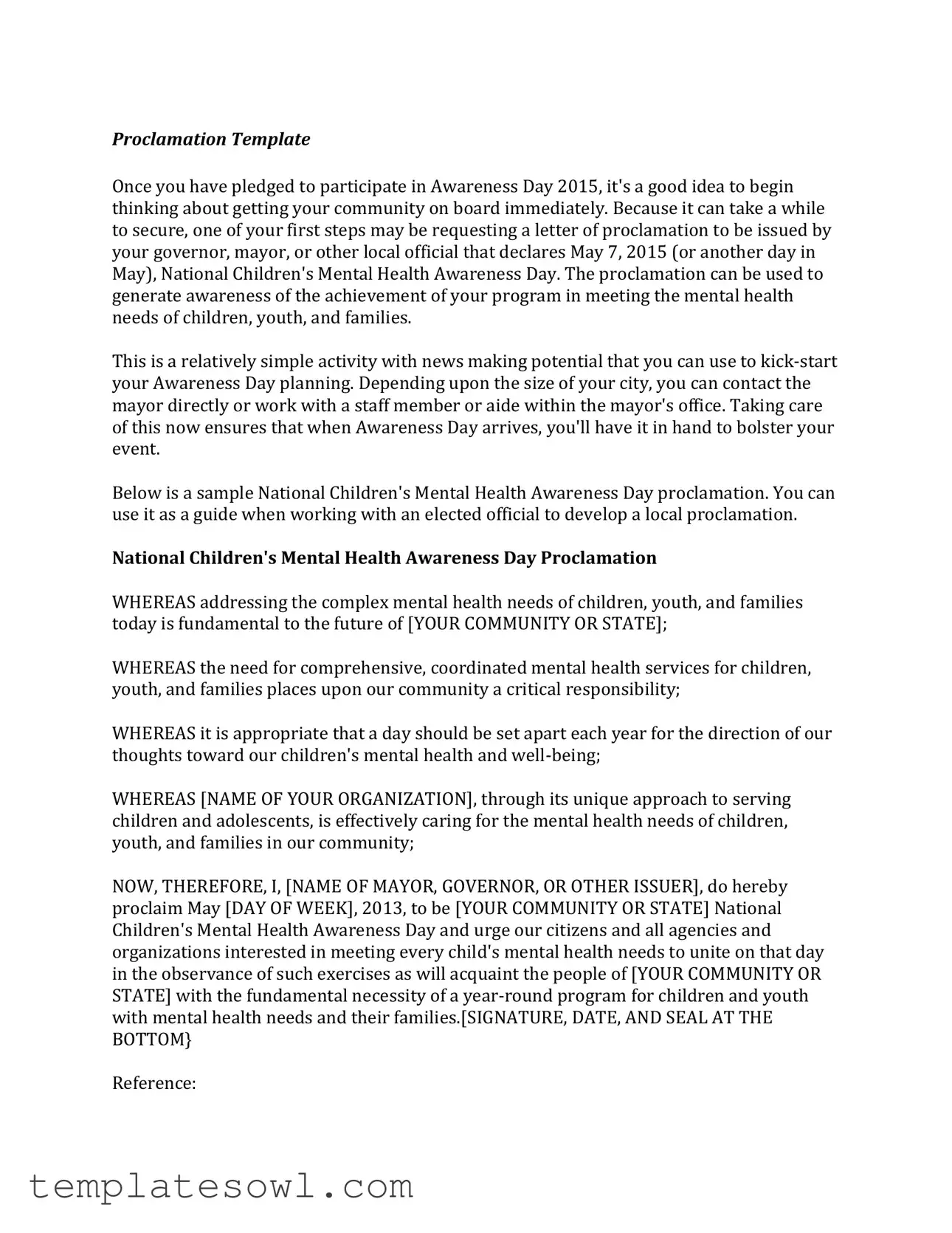Proclamation Template
Once you have pledged to participate in Awareness Day 2015, it's a good idea to begin thinking about getting your community on board immediately. Because it can take a while to secure, one of your first steps may be requesting a letter of proclamation to be issued by your governor, mayor, or other local official that declares May 7, 2015 (or another day in May), National Children's Mental Health Awareness Day. The proclamation can be used to generate awareness of the achievement of your program in meeting the mental health needs of children, youth, and families.
This is a relatively simple activity with news making potential that you can use to kick-start your Awareness Day planning. Depending upon the size of your city, you can contact the mayor directly or work with a staff member or aide within the mayor's office. Taking care of this now ensures that when Awareness Day arrives, you'll have it in hand to bolster your event.
Below is a sample National Children's Mental Health Awareness Day proclamation. You can use it as a guide when working with an elected official to develop a local proclamation.
National Children's Mental Health Awareness Day Proclamation
WHEREAS addressing the complex mental health needs of children, youth, and families today is fundamental to the future of [YOUR COMMUNITY OR STATE];
WHEREAS the need for comprehensive, coordinated mental health services for children, youth, and families places upon our community a critical responsibility;
WHEREAS it is appropriate that a day should be set apart each year for the direction of our thoughts toward our children's mental health and well-being;
WHEREAS [NAME OF YOUR ORGANIZATION], through its unique approach to serving children and adolescents, is effectively caring for the mental health needs of children, youth, and families in our community;
NOW, THEREFORE, I, [NAME OF MAYOR, GOVERNOR, OR OTHER ISSUER], do hereby proclaim May [DAY OF WEEK], 2013, to be [YOUR COMMUNITY OR STATE] National Children's Mental Health Awareness Day and urge our citizens and all agencies and organizations interested in meeting every child's mental health needs to unite on that day in the observance of such exercises as will acquaint the people of [YOUR COMMUNITY OR STATE] with the fundamental necessity of a year-round program for children and youth with mental health needs and their families.[SIGNATURE, DATE, AND SEAL AT THE BOTTOM}
Reference:
http://www.samhsa.gov/children/pnb_proclamation.asp
